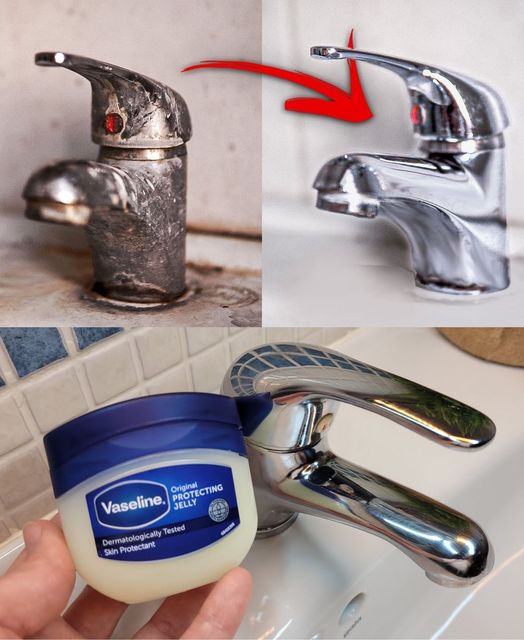ADVERTISEMENT
#### Step 2: Soak with White Vinegar
White vinegar is a powerful, natural acid that dissolves mineral deposits like lime scale.
1. **Soak a cloth in vinegar**: Soak a clean cloth or paper towel in white vinegar. Wring out the excess liquid, so it’s damp, not dripping.
2. **Wrap the faucet**: Carefully wrap the cloth around the affected area of the faucet, making sure it covers all areas with lime buildup.
3. **Secure with a plastic bag**: If the buildup is more extensive, fill a plastic bag with vinegar and secure it around the faucet with rubber bands or twist ties. This will allow the vinegar to soak directly on the faucet for a longer period, helping to break down the lime scale more effectively.
4. **Let it soak**: Leave the vinegar on the faucet for **30 minutes to 1 hour**. For severe buildup, you can let it soak overnight.
#### Step 3: Scrub Away the Lime Build-Up
After soaking, it’s time to scrub the faucet to remove the loosened lime scale.
1. **Use an old toothbrush**: Take an old toothbrush or a soft brush and gently scrub the faucet, focusing on areas with visible lime deposits. Use circular motions to lift the buildup from the surface. Be sure to scrub all around the faucet, including under the handles and near the base where buildup often occurs.
2. **Add baking soda for extra scrubbing power**: If the lime scale is still stubborn, sprinkle a small amount of **baking soda** directly onto the faucet or onto your toothbrush. Baking soda acts as a mild abrasive, helping to lift the buildup without scratching the surface.
#### Step 4: Rinse and Wipe Down
Once you’ve scrubbed away the majority of the lime buildup, it’s time to rinse and polish the faucet.
1. **Rinse with warm water**: Use warm water to rinse off the vinegar and any remaining lime scale or baking soda. You can use a clean cloth or sponge to wipe down the faucet and ensure all residues are removed.
2. **Dry and buff**: Use a microfiber cloth to dry the faucet thoroughly. Buff the surface gently to restore its shine and remove any water spots.
#### Step 5: Polish (Optional)
For an extra gleaming finish, you can polish the faucet using a few drops of olive oil or mineral oil.
1. **Apply a small amount of oil**: Place a drop or two of oil onto a clean cloth and rub it gently over the faucet. This will help to restore its luster and create a water-resistant barrier that prevents further buildup.
2. **Buff the surface**: After applying the oil, buff the faucet with a dry cloth to make it shine.
### Additional Tips to Prevent Lime Build-Up
After cleaning your faucet, it’s a good idea to take preventive measures to reduce lime scale buildup in the future. Here are a few tips:
– **Install a water softener**: If you have hard water, a water softener can reduce the mineral content, preventing lime scale buildup.
– **Use a squeegee after every shower**: After using the shower, wipe down the faucet and showerhead with a squeegee to prevent water spots and mineral deposits from forming.
– **Dry the faucet after use**: Wipe down your faucet with a dry cloth after each use to prevent water from evaporating and leaving behind mineral deposits.
– **Regular cleaning**: Clean your faucet regularly to prevent buildup from becoming stubborn and harder to remove.
### Conclusion
With just a few simple ingredients and some elbow grease, you can easily clean a shower faucet full of lime and make it look brand new again. White vinegar, baking soda, and a little scrubbing are all you need to break down hard water deposits and restore the shine to your faucet. By incorporating some regular maintenance, you can keep your faucet sparkling clean and free from mineral buildup for the long term.
Cleaning lime scale buildup from your shower faucet doesn’t have to be a hassle. Follow these steps, and your faucet will be gleaming once more, ready to shine for every shower!
ADVERTISEMENT
